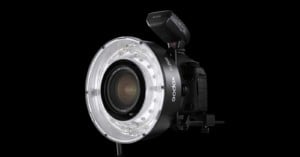
Godox’s New R200 Ring Flash is a Lighter, Lower-Power Alternative
Godox has announced the R200 Ring Flash attachment for the AD200P power device. The ring-shaped flash is a 200Ws strobe that is a lighter, lower-power alternative to the AR400.

Godox has announced the R200 Ring Flash attachment for the AD200P power device. The ring-shaped flash is a 200Ws strobe that is a lighter, lower-power alternative to the AR400.

One of the most frustrating things I see is photographers limiting their knowledge of light to one modifier. So much so, that there are people who can build whole portfolios with just one single type of light. While this is not wrong, it must get boring for the viewer after some time. That is why I went searching for some of the most unusual light shaping tools.
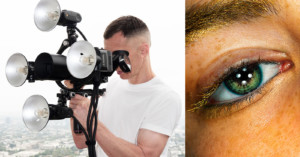
Godox recently released its new EC-200 extension head (AKA Flashpoint eVOLV 200) for the Godox AD200 TTL Pocket Flash (AKA Flashpoint eVOLV 200). Celebrity photographer Markus Klinko decided to combine four extenders and flashes into this unusual-looking quad-flash.

Using a modified DSLR, ultraviolet light bulbs, and a custom-built massive UV ring flash, Mathieu Stern teamed up with UV photographer Pierre-Louis Ferrer to capture some fascinating portraits and side-by-side video.
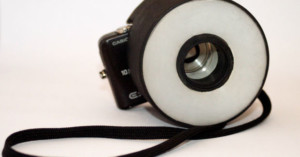
One of the most sought after lighting accessories is a ring light. Meant to create a unique aesthetic, a ring light is a great way to add a sharp, but direct light source to any image. The problem is, ring lights don't come cheap, and are rarely meant for smaller cameras.
Thankfully, there's now a DIY solution for you hands-on types. Thanks to Instructables user alpacalypse, you now have a step-by-step guide to creating a ring light for your typical point-and-shoot camera.
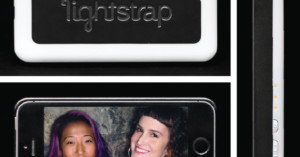
Although it can't compare to a quality camera, it's hard to deny that the iPhone is capable -- after all, we've seen NY Times cover photos, fashion shoots and even a professional portrait taken using an iPhone as the camera of choice.

Check out the picture above. Pretty cool, huh? Well, to make photos like this you can use a special technique. It wasn’t invented by me, but by a Bay Area photographer named Scott Jarvie. It's a pretty eye catching way to take portrait photos, and here's an introduction to how it's done.
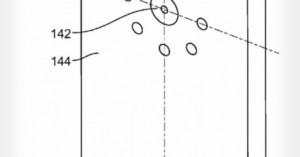
The "flash units" found on the backs of smartphones may be getting more powerful, but the general idea has largely remained the same: use a powerful LED light that can illuminate a scene when you need a little extra light. The power output doesn't really stack up to the flashes found on compact cameras, but Google has one solution for making the flash a bit brighter.
In a recently published patent, the company outlines the idea of placing multiple LED flashes on smartphones, perhaps in a ring around the camera unit.
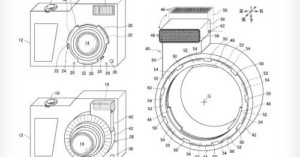
We've seen ring flash units that redirect light from a DSLR's pop-up camera and a hot shoe-mounted flash, but never from a compact camera's built-in flash. Based on a patent filing published earlier this month and uncovered by Egami, that's what Nikon appears to be in the process of building.
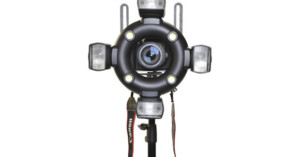
Okay -- maybe it's trying to reinvent the wheel, er, ring flash, but this could be an interesting gadget: Chinese company CononMark has unveiled a flash system that looks like a cross between a ring flash, speedlights, bracket flash and modeling lights.

If you’ve ever wondered when, or how, or why you might use a ring light or ring flash, this …
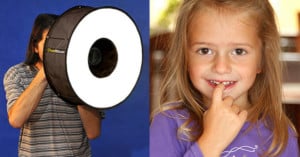
The RoundFlash is a new ring flash adapter that's lightweight and collapsible. Setting it up from its collapsed state is similar to setting up a tent: simply take the rods and stick them into the holes to expand the adapter.
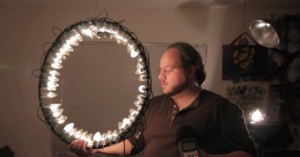
Videographer Joel Loukus created a continuous ring light source -- which he calls the "WreathLight" -- using a wreath frame and two strings of Christmas lights. The total cost came out to $24. It's a cheap and easy way of adding some soft lighting to your portraits.
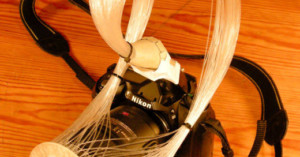
No, this isn’t some advanced beam weapon from a sci-fi flick. It’s actually a do-it-yourself ring flash created using …

Photojojo has a new ring flash adapter that allows you to shoot soft, studio-style portraits without shelling out the big bucks for an actual ring flash. It's a plastic add-on with a reflective circle that simply channels the light from your existing flash, so it doesn't require any batteries.
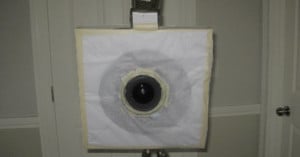
I have always been enthralled ring flashes, but they are so expensive! I recently found a pizza box ring flash how to, but it didn’t go on my camera (it was meant as an off camera ring flash) so I made some changes. And here, for all to use, is my version of the pizza box ring flash.
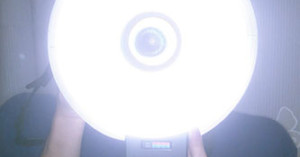
One of the things about macrophotography is that you either have to shoot wide open (and have a depth of field of about 1 micron or so) or stopped down to get some decent DOF (but have ridiculous shutter speeds making everything a blur). The solution: put a strobe on it! Given that you are so close to your subject, it's hard to properly light it. A ring flash is a good choice and at the tiny distance it is used from the subject, it has the effect of a large softbox creating even lighting.